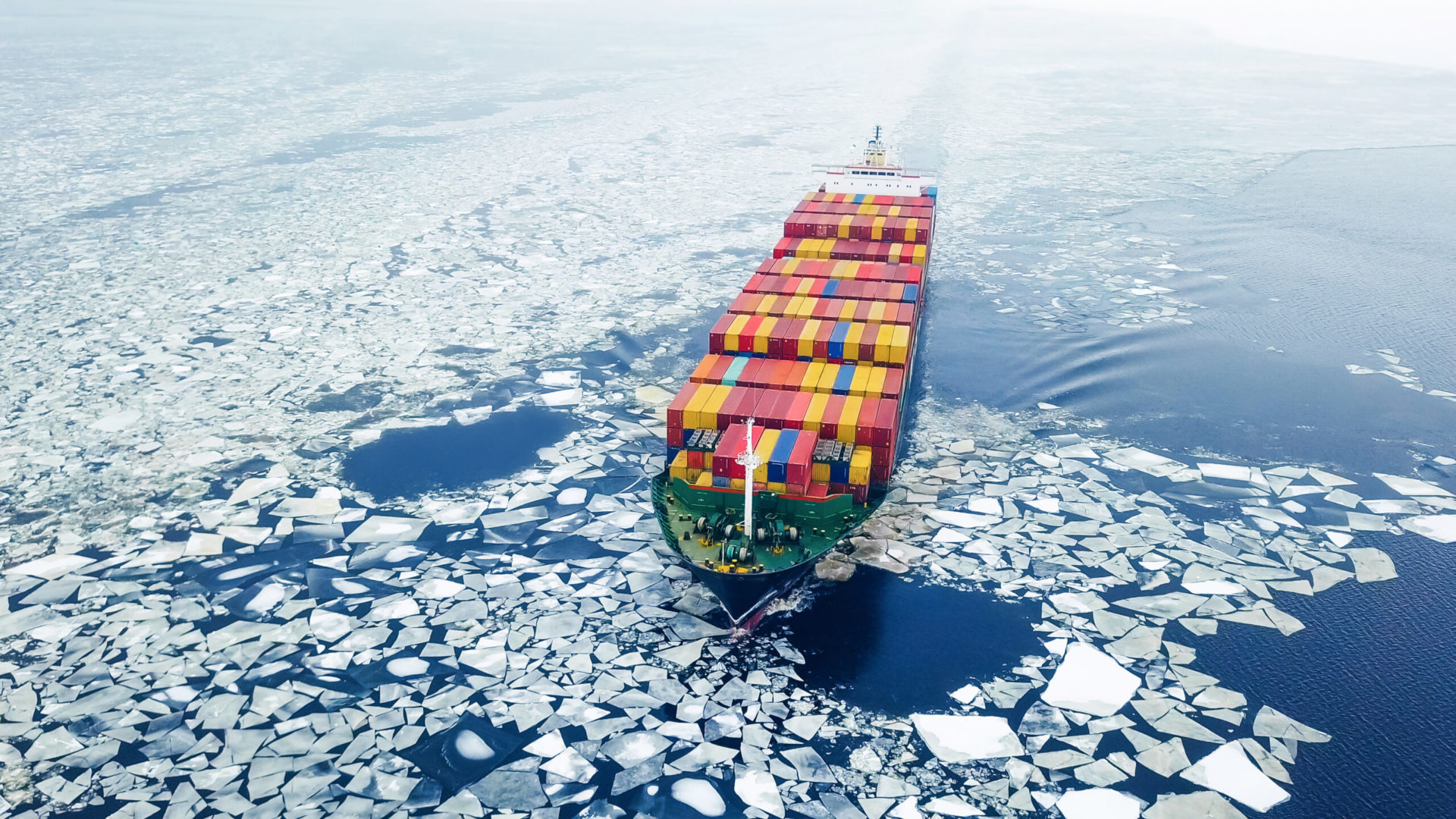
Climate Deep Dive
Ocean Conservancy’s work to advance climate solutions ensures that the ocean and those who rely on it can thrive for generations to come. Explore the resources below to learn more.

Clean Ocean Energy & Innovation
“Climate-Smart” Marine Protected Areas for Mitigation and Adaptation Policy
This brief reviews the potential climate benefits of marine protected areas (MPAs).
Considering the Deep Sea as a Source of Minerals and Rare Elements
This brief reviews the climate-related implications of deep-sea mining, including associated environmental risks.
Carbon Dioxide Removal as an Ocean-based Climate Solution
Learn about ocean CDR, a collection of techniques that leverage the ocean’s biological, physical and geochemical processes to take up extra atmospheric CO2.
The Ocean Can Help Us Tackle Climate Change
World leaders seeking to confront the climate crisis should understand that the ocean is being damaged by climate change – but it can also play a considerable part in delivering the solutions we need.

Decarbonizing Shipping
How Green Hydrogen Can Keep the Ocean Blue
Transitioning the shipping industry away from fossil fuels
Action Plan for Blue-Green Shipping Investment in the Pacific
This Action Plan derives principles for the investment community to support a blue-green shipping sector in the region.
Ocean-Climate Actions to Support the Biden-Harris Decarbonization Plan
This brief outlines how ocean solutions can support key domestic and international elements of the Biden-Harris decarbonization plan.
All Aboard: How the Biden-Harris Administration Can Help Ships Kick Fossil Fuels
This report lays out exactly how the U.S. government can eliminate greenhouse gas emissions from the shipping industry in order to help slow climate change.
Analysis of Liquefied Natural Gas as a Marine Fuel in the United States
This report aims to give the reader a detailed review of the existing literature on LNG as a marine fuel.
Future Maritime Fuels in the USA
This report shows that the US is particularly well positioned to be at the vanguard to aligning its fleet and energy system to scalable zero emission fuels (SZEF) this decade.
Green Shipping Corridors
Read our report to learn more about green shipping corridors.
The Maritime Fleet of the USA
This report takes a data-centric approach, combined with a rich understanding of the transition pathway this sector is currently on.
Zero-Carbon for Shipping in North America
A report commissioned by Ocean Conservancy explores the potential opportunity for five major ports on the west coast of North America.
Zero-Carbon for Shipping
A new report finds that many ports in Central and South America are primed to develop “electrofuels.”
Green Ports Interactive Funding Tracker
Following the Funding of Emission Reduction Projects in United States Ports

Ocean-Climate Action
Ocean-Climate Guide to Action
This Ocean-Climate Guide to Action provides options for countries to include meaningful ocean-based mitigation and adaptation actions in their plans to meet their Paris goals.
Blueprint for International Ocean-Climate Action
This document presents a set of near-term steps that governments and stakeholders could announce—as well as a set of medium-term and midcentury goals that they could adopt—to create a thriving climate and ocean.
Celebrating the First Comprehensive Bill on Ocean-Climate Action
The Ocean-Based Climate Solutions Act is the first comprehensive U.S. bill on ocean-climate action.
Models for Ocean-Climate Action
On the Pacific Coast of North America, state and provincial governments are experiencing firsthand the local impacts of climate change, and have been implementing a series of policies to help address them.
Overlooked Ocean Strategies to Address Climate Change
Here we discuss four ocean-climate linkages that suggest specific responses by Parties to the Paris Agreement.
Ocean-Based Climate Solutions in Nationally Determined Contributions (NDCs)
This policy brief tracks the inclusion of concrete, ocean-based climate actions in national climate goals under the Paris Agreement.
States Leading Ocean Climate Action
Explore state stories that highlight a variety of actions by states that have prioritized ocean-climate solutions.
Adaptation: State Climate Stories
Stories of states that have taken ambitious actions to strengthen and build their adaptative capacity and resilience to the changes that are already being experienced and to prepare for changes to come.
Funding: State Climate Stories
State stories that exemplify various funding sources and mechanisms used by states to successfully drive ocean and coastal mitigation and adaptation actions.
Governance & Knowledge: State Stories
State stories that showcase leading examples of successful coordination and partnerships that are crucial to implementing effective ocean-climate action.
Mitigation: State Stories
Stories from states that have already taken ambitious action to help mitigate greenhouse gas (GHG) emissions.
Lessons from California
This series highlights some of the key actions California has taken to promote ocean-based mitigation and adaptation solutions.
California’s Ocean-Climate Contribution
To support the Paris Agreement, California shared its “ocean-climate contribution” at COP24.
How Ocean-Based Solutions Contribute to Net Zero
On April 20, 2021, leaders from around the world joined a discussion, How Ocean-Based Solutions Contribute to Net Zero.
Opportunities for Ocean-Climate Action in the American Jobs Plan
Ocean Conservancy urges inclusion of bold financial investments and changes in federal policy to reduce U.S. greenhouse gas emissions, contribute to technological advances in clean energy, and provide resources to help communities and ecosystems adapt and thrive.
Ocean-Climate Actions to Support the Biden-Harris Plan to Build Back Better
This brief identifies ocean-based solutions the Biden-Harris Administration can take in its first 100 days to build physical, economic, social and ecological resilience to climate change.

More Resources
Ocean Acidification: Confronting our ocean’s changing chemistry
As more carbon pollution is absorbed by the ocean, our ocean is becoming more acidic.
Elements of a Blue-Green Foreign Policy
This brief presents several opportunities to create a “blue-green” foreign policy.
Principles of a Blue-Green Recovery
The ocean has a critical role to play: it is a significant economic driver that can contribute climate change mitigation and adaptation solutions that benefit frontline communities.
Executive Summary: Action Agenda for a Blue-Green Future
Read the Executive Summary of our Action Agenda for a Blue-Green Future.
Action Agenda for a Blue-Green Future
Learn more about U.S. federal ocean-climate recommendations for 2021.
Plastic is Everywhere—Except the One Place it Should Be
How investor and company climate commitments ignore plastics and what to do about it.
Reliable Scope 3 Emissions Disclosures are Key to Addressing Climate-Related Financial Risks
Using the case study of plastic resin producers, we demonstrate in this paper that Scope 3 emissions disclosures are essential to investors
From Policy to Power
Ocean Conservancy and Perkins Coie partnered to outline actionable recommendations that if implemented would significantly increase the effectiveness, efficiency and regulatory certainty of U.S. offshore wind.
Integrating & Strengthening Ocean Based Action Within the UNFCCC
This paper aims to inform discussion across the ocean and climate community on approaches to advance the implementation of the Glasgow Climate Pact on the integration and strengthening of ocean action within the UN Framework Convention on Climate Change (UNFCCC), and how the community, including the Friends of the Ocean and Climate and NGOs, may wish to engage collectively towards this endeavor.